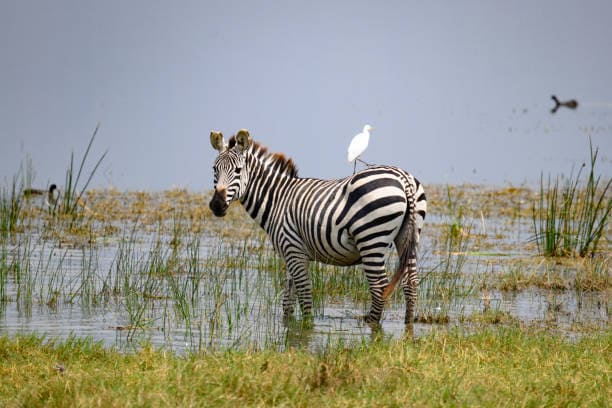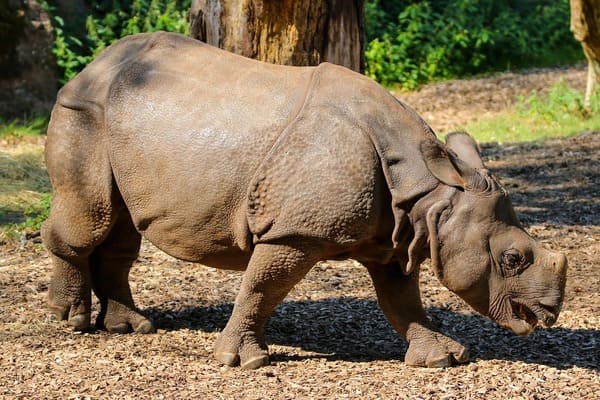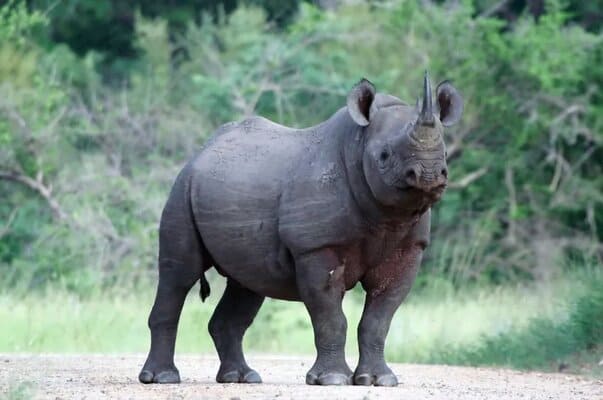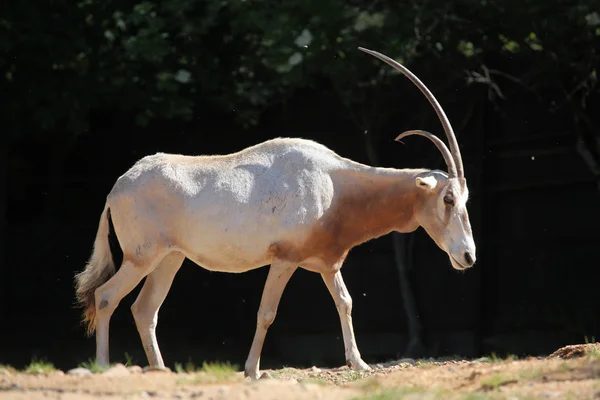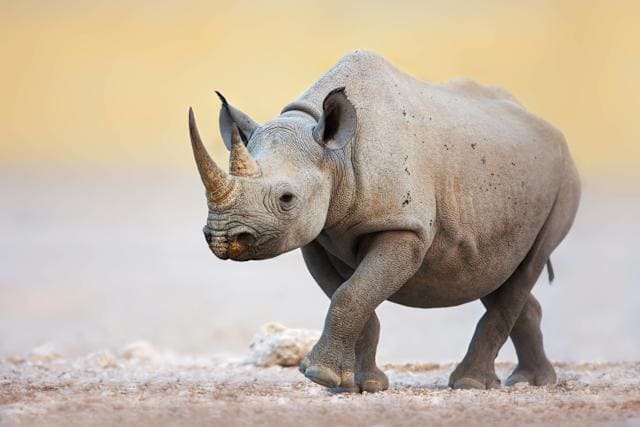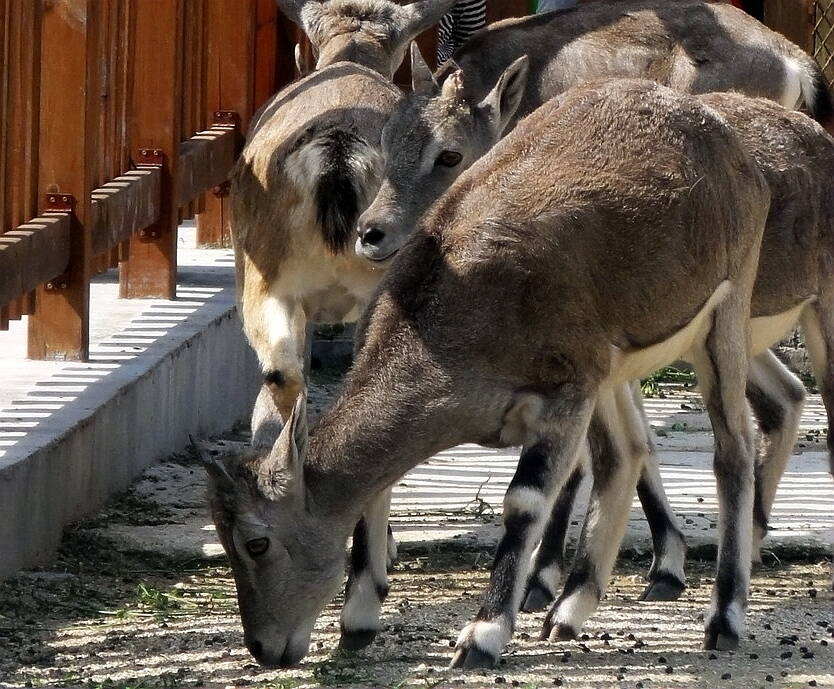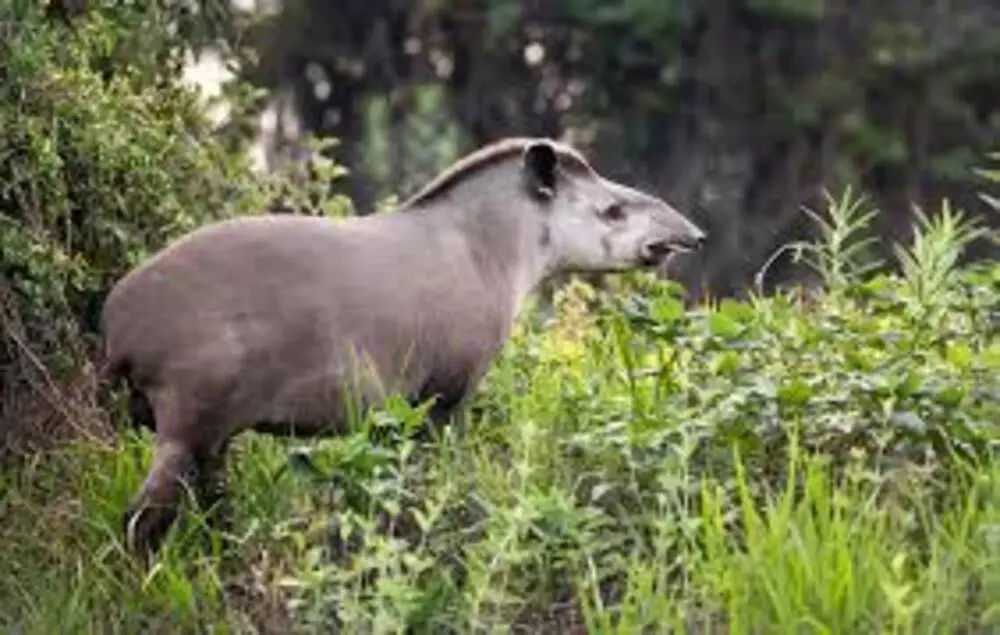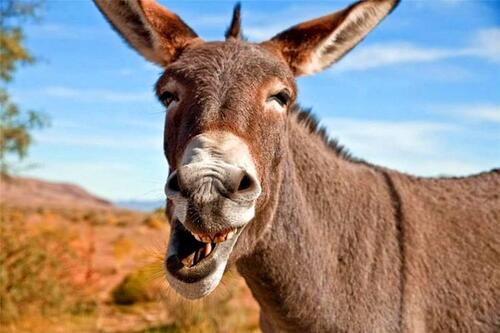Ammotragus lervia
IUCN
LCBasic Information
Scientific classification
- name:Ammotragus lervia
- Scientific Name:Ammotragus lervia,Bearded sheep, Barbary sheep, Berber sheep
- Outline:Ungulata
- Family:Artiodactyla Bovidae Ovis
Vital signs
- length:130-165cm
- Weight:30-145kg
- lifetime:About 20 years
Feature
Males have a sparse mane from throat to chest
Distribution and Habitat
The ibex is found in Algeria, Chad, Egypt, Libya, Mali, Mauritania, Morocco, Niger, Sudan, and Tunisia.
Presence uncertain: Western Sahara.
Introduced: Mexico, Spain (Canary Islands), and the United States.
The ibex usually inhabits rocky, steep areas from near sea level to snowless areas around 4,100 m (such as the Atlas in Morocco). They require rocky or sparse tree cover for shade and may spend long periods away from water. They may make some minor migrations related to food availability.
Appearance
There is strong sexual dimorphism in sexually mature individuals of the ram. The average weight of males is 82.07±6.29 kg, and females are 41.34±1.92 kg. The body length of males is 146.76±4.66 cm, and that of females is 128.14±1.82 cm. The shoulder height is 75-110 cm, and the tail length is 15-20 cm. The outer coat is covered with short bristles, red to sandy brown. The underparts are lighter in color, white. Both sexes have a thick mane on the throat, while the male has it extending down the neck to the chest and front legs. There is also long hair on the tail. The body is quite thick and strong. Both males and females have thick triangular horns, and the true horns are oval, similar to the horns of the European mouflon (Ovis aries musimon). But the males are slightly larger. The horns have numerous fine rings, although in old age these may wear away, resulting in a smooth-looking horn surface. The horns are curved in a semicircle on the back and can be up to 55 cm long.
There ar
Details
The scientific name of the Barbary Sheep is Ammotragus lervia, which is also known as Aoudad, Barbary Sheep, Uaddan in English, Mouflon À Manchettes in French, Aoudad, Berberschaf, Mähnenschaf, Mähnenspringer in German. It is the only species in the genus Ammotragus and has 6 subspecies.
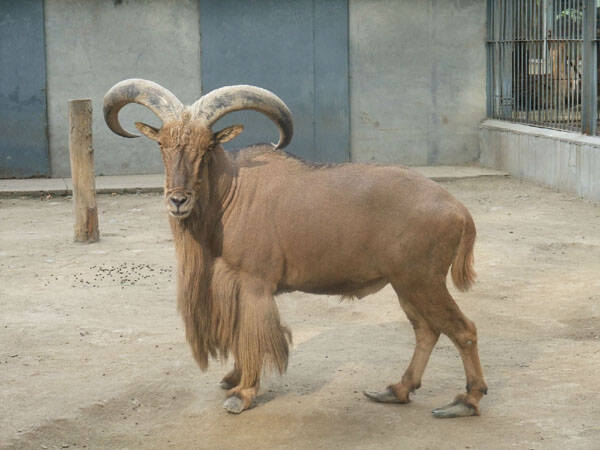
The ram usually lives alone or in small groups. It is a herbivore that combines nomadic and foraging functions. It can survive without water for a long time (even for several years) and eat juicy grasses. Like most desert dwellers, the ram is most active at cool dawn and dusk, seeking shade and shelter during the day. They are exceptionally steady on their feet and have very strong jumping ability, and can easily cross obstacles of about 2 meters. The lack of vegetation in their habitat allows them to hide themselves by lying still when faced with danger. Although they usually get the water they need from their food, they will drink and wallow to their heart's content if water is available. They feed on sparse grasses, shrubs, acacia leaves and lichens.
Female ibex give birth twice a year, with a gestation period of 60 days and one calf each time. Although they can breed all year round, the peak period is from September to November each year, with young ibex born in March and April and weaning for 3-4 months. Newborn ibex can jump between rocks on the mountain almost immediately after birth. Sexual maturity occurs at 18 months. Lifespan is 20 years.
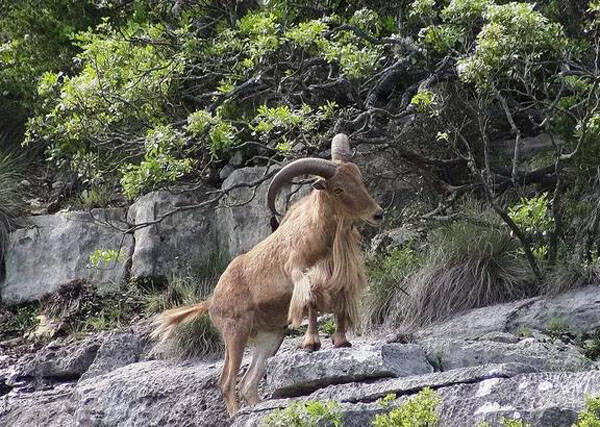
As of 2016, the total population of the ibex was estimated at 5,000-10,000. Estimates for the total population in Morocco range from 800-2,000, with several thousand in Algeria. Survival rates of the ibex are low in Chad, Mauritania, and Mali, and there are no estimates for Libya, Western Sahara, or Tunisia. There are 3,500 individuals in the Ader and Tenere Nature Reserves in Niger, and an estimated 700 individuals outside the reserves. The species appears to be increasing in the Ader Mountains, but the trend is generally downward for the species as a whole. There are no estimates for Sudan, but the species is generally considered very rare and almost certainly declining. The ibex, once thought to be extinct, appears to be abundant in the Eastern and Western Deserts of Egypt.
As of 2016, the ibex population is estimated to decline by more than 10% over the next 15 years (three generations) due to hunting and habitat loss.
Listed on the IUCN Red List of Threatened Species (IUCN) 2016 ver3.1 - Vulnerable (VU).
Protect wild animals and stop eating game.
Maintaining ecological balance is everyone's responsibility!

